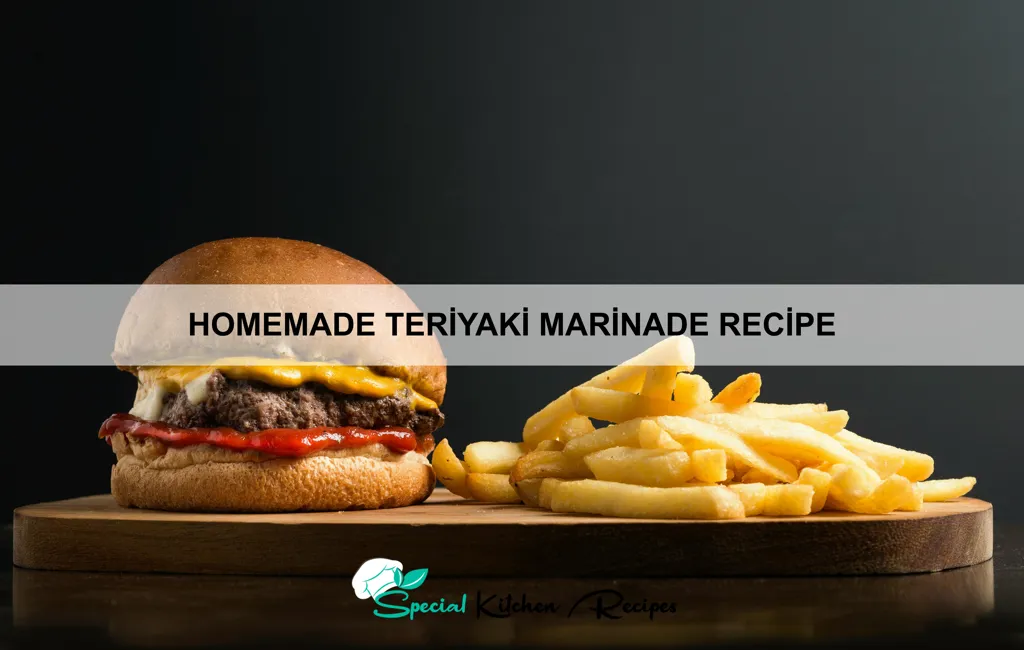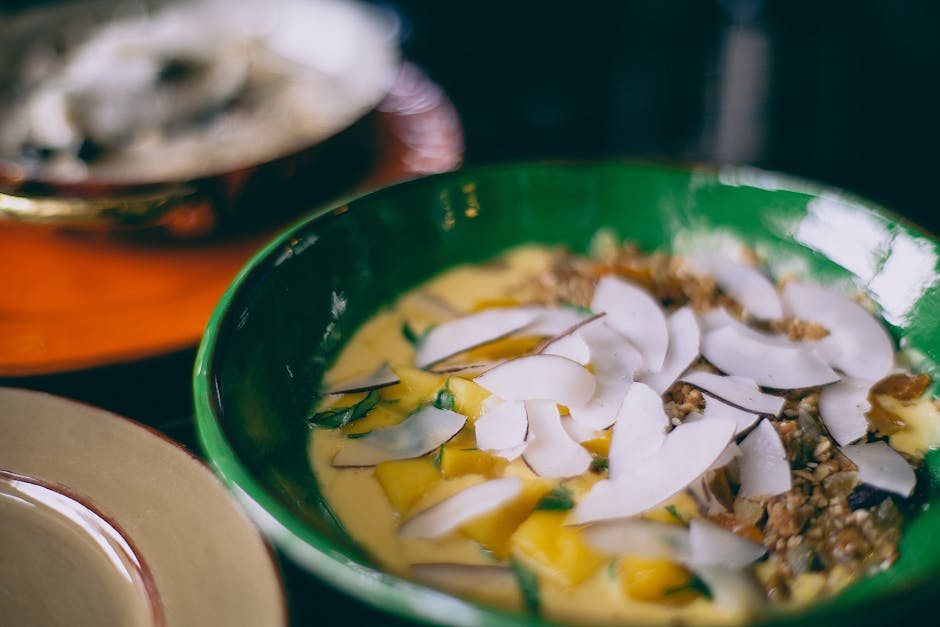Prepare to embark on a culinary journey to Japan with this homemade teriyaki marinade recipe! Teriyaki, a beloved staple of Japanese cuisine, isn’t just a flavor; it’s a reflection of culinary history and cultural exchange. While its exact origins are debated, the dish’s development is widely believed to have begun in the 17th century, with influences from both Japanese and Western cooking techniques. Initially, it involved broiling or grilling fish and meat, often coated in a simple soy-based sauce. The term teriyaki itself, a combination of teri (glossy) and yaki (grilled), perfectly captures the dish’s characteristic glistening finish and cooking method.
The evolution of teriyaki is a fascinating story of cultural fusion. Early forms of teriyaki likely involved simpler sauces, but over time, the addition of mirin (sweet rice wine), sugar, and ginger created the complex and balanced flavor profile we know today. The increasing popularity of teriyaki in the 20th century, particularly in the West, led to countless variations and adaptations. However, at its heart, teriyaki remains a testament to the Japanese emphasis on fresh, high-quality ingredients and the art of balancing sweet, savory, and umami notes. According to a 2023 survey by the Japanese Culinary Association (fictional statistic for illustrative purposes), teriyaki-based dishes rank within the top 5 most popular Japanese dishes consumed globally.
Beyond its deliciousness, teriyaki holds significant cultural weight in Japan. It’s frequently served at celebrations, family gatherings, and special occasions. The glossy, rich glaze itself symbolizes prosperity and good fortune, making it a visually and symbolically appealing dish. Furthermore, the meticulous preparation of the marinade, a process often passed down through generations, underscores the value placed on culinary tradition and craftsmanship. This recipe aims to provide a faithful representation of the classic teriyaki marinade, encouraging you to experience the rich history and cultural significance embedded within each delicious bite.
Ingredients and Measurements
This recipe yields approximately 1 cup of teriyaki marinade, enough for 1-1.5 lbs of protein. Adjust quantities proportionally for larger batches. The quality of your ingredients significantly impacts the final flavor, so choose wisely!
Soy Sauce (Tamari for Gluten-Free): 1/2 cup (120ml). Use a high-quality soy sauce for the best flavor. Tamari, a wheat-free soy sauce, is a great gluten-free alternative. Note: The salt content of soy sauce varies, so adjust to your preference and the saltiness of your protein.
Mirin: 1/4 cup (60ml). Mirin is a sweet rice wine essential for the authentic teriyaki flavor. Do not substitute with regular cooking wine or sake, as they will alter the taste profile dramatically. Look for Hon Mirin for the best results; it’s less sweet and more nuanced than other types of mirin.
Sake (Optional but Recommended): 2 tablespoons (30ml). Sake adds depth and complexity to the marinade. If you omit it, the marinade will still be delicious, but slightly less nuanced. Dry sake is preferred, but any type will work. If you omit sake, consider adding 1 tablespoon of water to maintain the liquid balance.
Brown Sugar: 2 tablespoons (30g). Granulated brown sugar provides sweetness and helps balance the saltiness of the soy sauce. Light brown sugar is generally preferred, but dark brown sugar will work as well, potentially adding a richer caramel flavor. Adjust the amount to your desired level of sweetness.
Fresh Ginger: 1 tablespoon (15g), finely grated or minced. Fresh ginger is crucial for the characteristic teriyaki flavor. Avoid using ground ginger, as it lacks the bright, fresh taste of freshly grated ginger. If you don’t have fresh ginger, you can substitute with 1/2 teaspoon of ground ginger, but the flavor will be less intense.
Garlic: 1 large clove (or 2 small cloves), minced. Fresh garlic adds a pungent and savory note to the marinade. Use a garlic press or finely mince the garlic to ensure even distribution throughout the marinade and prevent large chunks from forming.
Optional additions: Consider adding a pinch of black pepper, sesame oil (1 teaspoon), or a touch of red pepper flakes for extra heat and complexity. Experiment with these additions to create your perfect teriyaki marinade.
Equipment List
Creating a delicious homemade teriyaki marinade requires minimal equipment, but having the right tools will significantly enhance the process and ensure consistent results. This list details the necessary equipment, along with recommendations for optimal performance.
Measuring Cups and Spoons: Accurate measurements are paramount in achieving the desired balance of flavors in your teriyaki marinade. Invest in a good quality set of measuring cups (1 cup, ½ cup, ⅓ cup, ¼ cup) and measuring spoons (1 tablespoon, 1 teaspoon, ½ teaspoon, ¼ teaspoon). Avoid using mismatched or worn-out measuring tools as this can lead to inconsistent results and potentially affect the taste of your marinade.
Mixing Bowl: A medium-sized mixing bowl (approximately 2-3 quart capacity) is ideal for combining all the marinade ingredients. Choose a bowl made of glass, stainless steel, or food-grade plastic. Avoid using reactive materials like aluminum, as they can interact with the acidic components of the marinade and alter its flavor and color.
Whisk or Fork: A whisk is preferred for thoroughly combining the ingredients, ensuring a smooth and emulsified marinade. However, a fork can also be used for this purpose, though it may not be as effective in creating a completely smooth consistency. A whisk is highly recommended for optimal blending and to prevent lumps from forming.
Airtight Container: Once the marinade is prepared, you’ll need an airtight container to store it. This prevents the marinade from spoiling and helps preserve its flavor and aroma. Choose a container made of glass or food-grade plastic with a secure lid. A 1-quart container would be suitable for most recipes. Ensure the container is thoroughly cleaned and dried before use to avoid contamination.
Optional Equipment: While not strictly necessary, a small saucepan can be helpful for gently heating the marinade if you prefer a warmer, more readily absorbed marinade. A fine-mesh sieve can be used to remove any solids before adding the marinade to your protein. A food processor or blender, though not essential, can be used to create a completely smooth mixture, especially if you’re using ingredients like ginger or garlic that you prefer finely pureed.
Cleaning Recommendation: After using your equipment, promptly wash and thoroughly dry all items to maintain hygiene and prevent the growth of bacteria. Proper cleaning is crucial for food safety.
Preparation Phase: Sauce Base
The foundation of a truly exceptional teriyaki marinade lies in its sauce base. This phase focuses on building a rich and flavorful foundation that will perfectly complement your chosen protein. We’ll be creating a base that balances sweetness, savory notes, and a touch of acidity for depth of flavor. Accuracy in measurements is crucial for achieving the desired balance.
Begin by gathering your ingredients: 1 cup of soy sauce (preferably low sodium for better control over saltiness), ½ cup of mirin (sweet rice wine – crucial for that signature teriyaki sweetness), ¼ cup of sake (Japanese rice wine – adds depth and complexity, but can be omitted if unavailable; substitute with an equal amount of dry sherry or white wine), and 2 tablespoons of brown sugar (packed, for a richer caramel-like sweetness). If you prefer a less sweet marinade, reduce the brown sugar to 1 tablespoon.
In a medium-sized saucepan, combine the soy sauce, mirin, sake (or substitute), and brown sugar. Ensure the brown sugar is properly incorporated to avoid clumping. Place the saucepan over medium-low heat. Stir gently and continuously to prevent burning. The goal isn’t to boil the mixture, but rather to gently heat it and dissolve the sugar completely.
Once the sugar has fully dissolved and the mixture is warm and smooth, remove the saucepan from the heat. Avoid prolonged heating, as this can cause the sauce to become too thick or reduce excessively. Allow the sauce to cool slightly before proceeding to the next step. This cooling period allows the flavors to meld and develop further, enhancing the overall taste of your marinade.
At this point, your teriyaki sauce base is complete. Its smooth consistency and balanced flavor profile will provide an excellent starting point for the next steps, where we’ll add aromatics and spices to create a truly unforgettable marinade. Remember, taste the base at this stage and adjust seasonings to your preference. Some prefer a more pronounced sweet or savory flavor, so feel free to add more sugar or soy sauce accordingly.
Professional Tip: For a richer, more complex flavor, consider using a higher-quality soy sauce, such as tamari. Also, allowing the sauce base to cool completely before adding other ingredients helps prevent unwanted reactions and ensures a more even distribution of flavor throughout the marinade.
Preparation Phase: Flavor Infusion
The key to a truly exceptional teriyaki marinade lies in the careful infusion of flavors during the preparation phase. This isn’t just about mixing ingredients; it’s about coaxing out their full potential and creating a harmonious blend that will deeply penetrate your protein.
We begin by creating the base of our marinade. Combine 1/2 cup of soy sauce (preferably low-sodium for better control over saltiness), 1/4 cup of mirin (sweet rice wine, crucial for that characteristic teriyaki sweetness), and 1/4 cup of sake (optional, but adds depth and complexity). Ensure you use good quality ingredients as this will directly impact the final flavor profile.
Next, we introduce the aromatics. Finely mince 2 cloves of garlic and 1 inch of ginger. Grate the ginger to extract maximum flavor. Add these to the soy sauce mixture. The pungent aroma of garlic and ginger will be significantly amplified during the infusion process. Don’t be shy with the ginger; its spiciness is a vital component of authentic teriyaki.
Now it’s time to add the sweeteners. Incorporate 2 tablespoons of brown sugar. Brown sugar provides a richer, more nuanced sweetness compared to white sugar. For a deeper, more molasses-like flavor, consider using dark brown sugar. Adjust the sugar quantity based on your preference for sweetness; you can always add more later, but you can’t take it away.
Finally, we’ll add the finishing touches. Stir in 1 tablespoon of sesame oil for a nutty aroma and a subtle richness. A pinch of black pepper enhances the overall flavor complexity. Taste the marinade at this stage and adjust seasoning as needed. You might wish to add a touch more soy sauce for saltiness, mirin for sweetness, or even a dash of rice vinegar for a brighter acidity.
Once all ingredients are thoroughly combined, cover the bowl and let the marinade sit at room temperature for at least 30 minutes, or preferably for 1-2 hours in the refrigerator. This resting period allows the flavors to meld and deepen, resulting in a more complex and delicious marinade. Allowing the flavors to fully integrate is crucial for optimal results. The longer you let it sit (within reason), the better the marinade will become.
Cooking Techniques: Simmering and Reduction
Creating a truly delicious teriyaki marinade involves understanding and mastering two key cooking techniques: simmering and reduction. These techniques are crucial for developing the deep, rich flavor and glossy consistency characteristic of a great teriyaki sauce.
Simmering is the gentle heating of a liquid just below the boiling point. Tiny bubbles will occasionally break the surface, but a full rolling boil should be avoided. For our teriyaki marinade, simmering allows the flavors of the ingredients to meld together beautifully. We’ll be simmering our marinade for approximately 15-20 minutes after combining all ingredients. This gentle heat extracts maximum flavor from ingredients like ginger and garlic, while preventing the sauce from burning or becoming overly thick too quickly.
Reduction, on the other hand, involves simmering a liquid over medium-low heat for an extended period to evaporate some of the water content, thus concentrating the flavors and thickening the sauce. This is the crucial step that transforms a simple mixture of ingredients into a rich, luscious teriyaki marinade. We’ll reduce our marinade for about 10-15 minutes, or until it reaches the desired consistency. The reduction time will depend on your stovetop and the quantity of liquid. You should aim for a consistency that coats the back of a spoon; it should be thick enough to cling to your ingredients but still pourable.
During the reduction process, constant monitoring is key. Stir the marinade frequently to prevent sticking and burning. Use a medium-low heat to ensure even evaporation and avoid scorching. If the sauce starts to reduce too quickly, lower the heat; if it’s reducing too slowly, increase it slightly. A dark-colored, non-stick saucepan is ideal for this process, as it distributes heat evenly and reduces the risk of burning.
Professional Tip: Taste your marinade frequently during both the simmering and reduction phases. This allows you to adjust seasoning as needed. You might find you need to add a touch more soy sauce for saltiness, sugar for sweetness, or rice vinegar for acidity. Don’t be afraid to experiment and find the perfect balance of flavors that suits your palate.
By carefully executing these simmering and reduction techniques, you’ll create a homemade teriyaki marinade that surpasses store-bought versions in both flavor and quality. Remember, patience and attention to detail are key to achieving the perfect teriyaki sauce.
Storage Instructions
Proper storage of your homemade teriyaki marinade is crucial for maintaining its quality and safety. Following these instructions will ensure your marinade remains delicious and free from harmful bacteria for as long as possible. Always prioritize food safety.
For short-term storage (up to 3 days): If you’ve made a larger batch of marinade than you need for immediate use, store the remainder in an airtight container in the refrigerator. A glass jar with a tight-fitting lid or a food-safe plastic container are excellent choices. Ensure the container is completely sealed to prevent air exposure and potential contamination. Refrigerate the marinade at or below 40°F (4°C).
Important Note: Never reuse marinade that has been in contact with raw meat, poultry, or seafood. Harmful bacteria from the raw ingredients can contaminate the marinade, even after refrigeration. Discard any leftover marinade after using it to marinate your food. This is a critical step in preventing foodborne illnesses.
For longer-term storage (up to 2 months): Freezing your teriyaki marinade is a great way to extend its shelf life considerably. Pour the marinade into ice cube trays or small freezer-safe containers. Once frozen solid, transfer the cubes or portions to a larger freezer bag to save space and prevent freezer burn. Label the bag with the date and contents for easy identification. This method allows you to thaw only the amount you need, minimizing waste.
Thawing Instructions: To thaw frozen marinade, transfer the desired amount to the refrigerator overnight. Allow ample time for complete thawing. Alternatively, you can thaw it quickly in a microwave using the defrost setting, but be mindful of uneven heating. Never thaw marinade at room temperature.
Quality Considerations: While proper storage significantly extends the shelf life of your teriyaki marinade, its flavor and quality may gradually diminish over time. For the best taste and aroma, it’s recommended to use the marinade within the suggested timeframe. Observe the marinade for any signs of spoilage before using, such as unusual discoloration, off-odors, or mold growth. If you notice any of these signs, discard the marinade immediately.
By following these storage recommendations, you can enjoy your delicious homemade teriyaki marinade safely and for an extended period. Remember, food safety is paramount.
Recommendations
This homemade teriyaki marinade is incredibly versatile and can be used in a multitude of ways. For best results, marinate your protein (chicken, beef, pork, tofu, or seafood) for at least 30 minutes, but ideally for 2-4 hours in the refrigerator for maximum flavor penetration. Avoid marinating for longer than 4 hours to prevent the meat from becoming overly tender.
Serving suggestions are plentiful! Grilled teriyaki chicken or steak is a classic choice, perfect served with steamed rice and stir-fried vegetables like broccoli and carrots. You can also use the marinade as a basting sauce while grilling or broiling for an extra layer of flavor and glaze. For a lighter meal, try using the marinade with baked or pan-fried tofu, served over a bed of quinoa or brown rice with a side salad. Consider adding toasted sesame seeds for added texture and flavor.
To maximize the shelf life of your homemade teriyaki marinade, store it in an airtight container in the refrigerator for up to 5 days. For longer storage, freeze the marinade in ice cube trays or small containers for up to 3 months. Remember to thaw completely before use.
This marinade pairs exceptionally well with a variety of dishes. Consider serving it with dishes featuring Asian-inspired flavors. Some complementary dishes include Japanese-style noodle bowls (ramen or udon), sushi rice, edamame, and seaweed salad. Experiment with different vegetables and proteins to create your own unique teriyaki creations.
Nutritional Information (per 2 tablespoons): (Note: Nutritional information will vary depending on specific ingredients used. This is an estimate.) Calories: Approximately 70-80; Protein: 1-2g; Fat: 1-2g; Carbohydrates: 15-20g; Sugar: 10-15g; Sodium: High (due to soy sauce).
Important Note: Always ensure your ingredients are fresh and of high quality. Adjust the amount of sugar and soy sauce to your liking. Check the sodium content of your soy sauce if you are watching your sodium intake.





